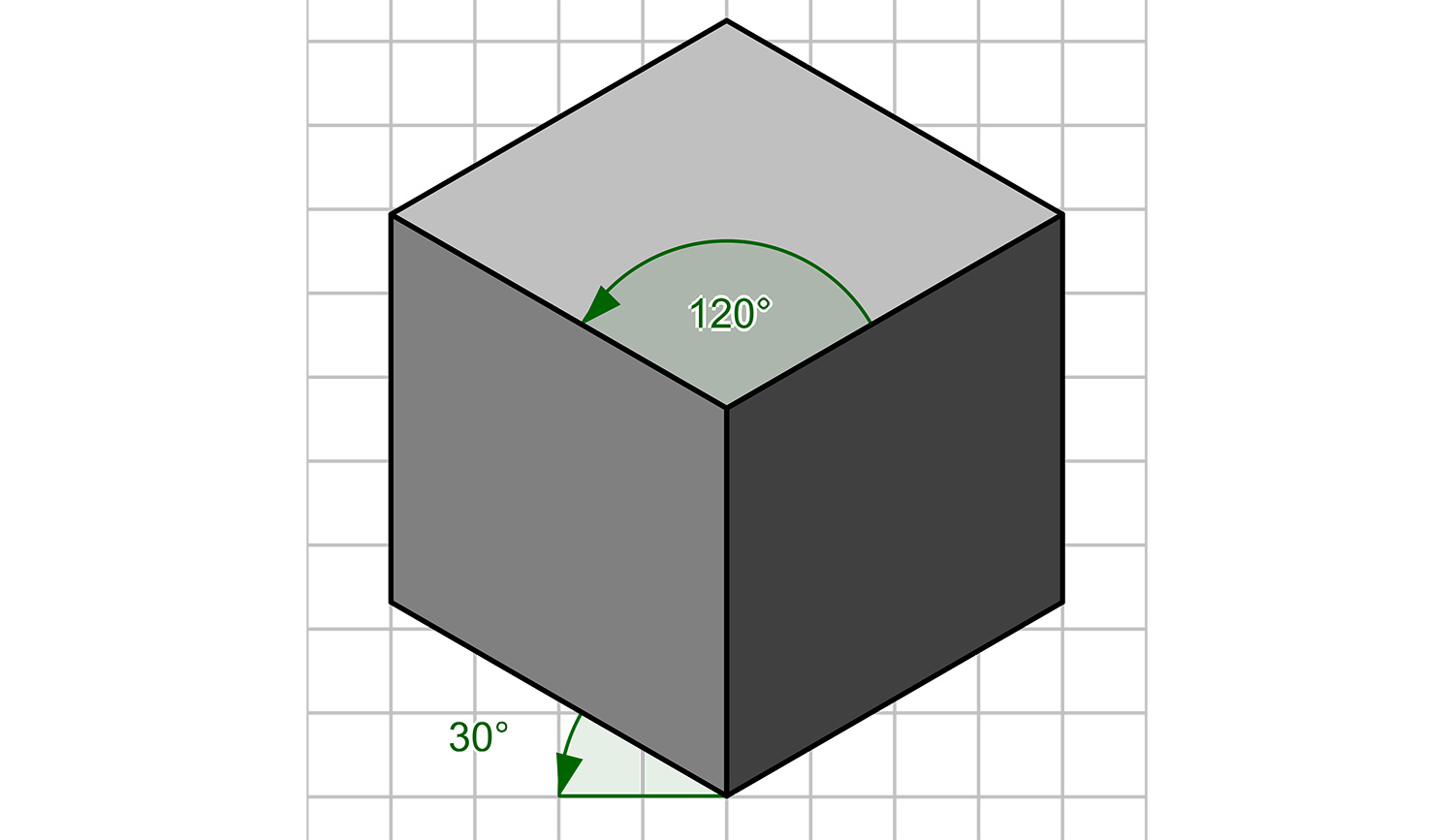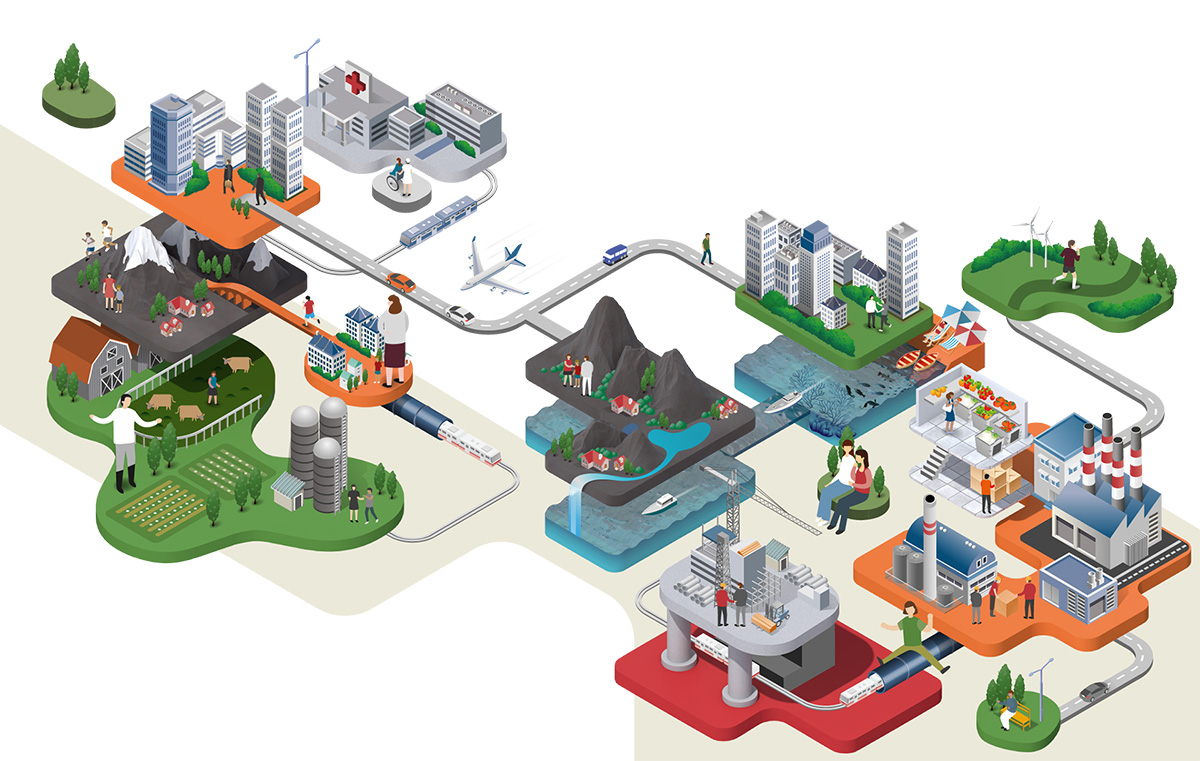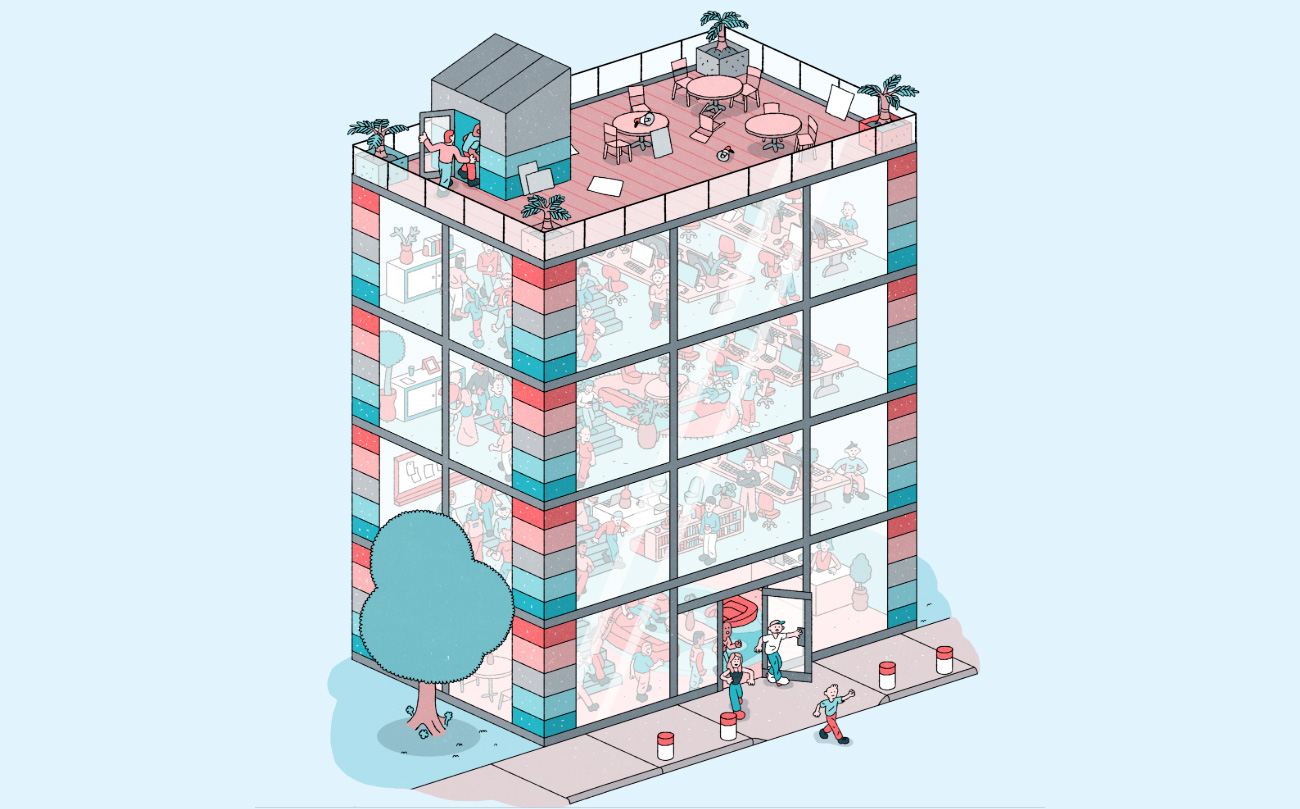how to read drawings show 3d image
Isometric drawing: A designer's guide
Isometric drawing is a grade of 3D drawing, which is set up out using 30-caste angles. It is a blazon of axonometric drawing so the aforementioned scale is used for every axis, resulting in a non-distorted paradigm. Since isometric grids are pretty easy to fix, once you sympathize the basics of isometric cartoon, creating a freehand isometric sketch is relatively simple.
This postal service explains all you lot demand to know about isometric drawing. You'll acquire exactly what defines an isometric drawing, how information technology differs from one-signal perspective, what to do to get started creating your ain isometric projection, and even more.
Elevate your art skills further by post-obit the tutorials in our how to draw guide (which will teach you how to depict pretty much anything), and yous can also utilize this roundup of the art techniques y'all should know nigh.
What is isometric drawing?
An isometric cartoon is a 3D representation of an object, room, building or pattern on a 2D surface. One of the defining characteristics of an isometric drawing, compared to other types of 3D representation, is that the last prototype is not distorted. This is due to the fact that the foreshortening of the axes is equal. The discussion isometric comes from Greek to mean 'equal mensurate'.

Isometric drawings differ from other types of axonometric drawing, including dimetric and trimetric projections, in which different scales are used for different axes to requite a distorted final image.
In an isometric drawing, the object appears as if it is being viewed from above from ane corner, with the axes being set out from this corner point. Isometric drawings begin with i vertical line along which ii points are defined. Any lines set out from these points should be synthetic at an angle of xxx degrees.
Isometric cartoon vs one-indicate perspective
Both isometric drawings and one-betoken perspective drawings use geometry and mathematics to present 3D representations on 2d surfaces. One-point perspective drawings mimic what the human eye perceives, so objects announced smaller the further away they are from the viewer. In contrast, isometric drawings utilise parallel projection, which means objects remain at the same size, no thing how far away they are.

Basically, isometric drawing doesn't utilize perspective in its rendering (i.due east. lines don't converge every bit they move away from the viewer). Isometric drawings are more useful for functional drawings that are used to explicate how something works, while one-point perspective drawings are typically used to requite a more sensory idea of an object or infinite.
How to draw an isometric cube
Drawing a cube using isometric projection is very easy. Yous will need a piece of newspaper, ruler, pencil and protractor (or for the shortcut version, using gridded newspaper, jump to the next section).
Using the ruler, describe a vertical line on the page, and mark three every bit spaced points along it. Draw a horizontal line through the everyman point, and using the protractor, mark out a 30 degree angle up from the line on either side. Draw a line back through the everyman point from the thirty caste bending on each side.
Echo this step through the eye point and the same through the top point, simply with the top betoken, mark out the bending downward. The lines from the second and third signal will cross at a certain signal, and from this intersection, draw a vertical line down towards the angled lines coming from the bottom point. You should be able to come across the form of the cube where all of the lines intersect.
Using an isometric grid
For all the cheats out at that place who don't have the necessary tools (or inclination) to create an isometric project, at that place is a foolproof mode to fustigate out your axonometric drawing: simply utilise an isometric filigree. The design can be downloaded online, and will save you lots of time and endeavour.
Alternatively, learn how to gear up up your own grid in Illustrator by following the video tutorial below.
In one case your eyes become accustomed to the trickery of the triangular pattern, you will immediately notice how the isometric works. The super handy thing about the grid is that it already has all of the 30 degree angles set for you. This tutorial walks yous through how to draw a cube using an isometric grid.
The benefits of isometric cartoon
Isometric drawings are very useful for designers – peculiarly architects, industrial and interior designers and engineers, equally they are ideal for visualising rooms, products, and infrastructure. They're a dandy manner to quickly test out different design ideas.
There are a number of other situations in which isometric projection is useful. In wayfinding systems, for instance in museums or galleries, an isometric wall maps tin bear witness visitors where they are in the building, what is going on elsewhere, and how to become to get around.
Some of the best infographics apply isometric projection to enable them to show more data than would exist possible in a 2D cartoon. Some logo designs too use this arroyo to create bear on.

Exploded isometric drawings are useful for revealing parts of a product that might be hidden or internal. They're used by architects, engineers and product designers the earth over to better explicate the intricacies of a design. To create an exploded isometric, you need to know the detailed inner workings of whatever you are cartoon, and so they're are unremarkably used at the concluding blueprint stage for presentations to clients.
Isometric drawing examples

Illustrator and art managing director Mauco created this isometric map to represent the areas surrounding the SPECTRUM building in London. It shows just the primary roads and landmarks to help people orientate themselves.

Jing Zhang is an illustrator working mainly with clients in the advertising industry. She's congenital a particular reputation for her detailed exploded isometric designs, including this creation for Slack. Information technology's part of a series to accompany the brand'south stories, focusing on elements such equally a happy mobile workforce (in a higher place).

This design was created for an article in the The California Sunday Magazine, entitled The Tech Revolt and exploring political activism in the tech industry. In it, illustrator Tim Peacock uses isometric project equally a way of revealing the inner workings of a Silicon Valley function block.

MC Escher was mayhap the male monarch of using isometric projections in his artworks. His use of parallel geometries to depict mind-bending staircases that become nowhere will be familiar to most. In Bicycle (1938), is it articulate how isometric project comes into his work, from the pattern on the basis to the utilize of cubes that turn into steps.
Read more:
- Pencil cartoon techniques: Pro tips to sharpen your skills
- Incredibly realistic pencil drawings
- Sketching tips: Hone your skills
Related manufactures
Source: https://www.creativebloq.com/features/isometric-drawing
0 Response to "how to read drawings show 3d image"
Post a Comment